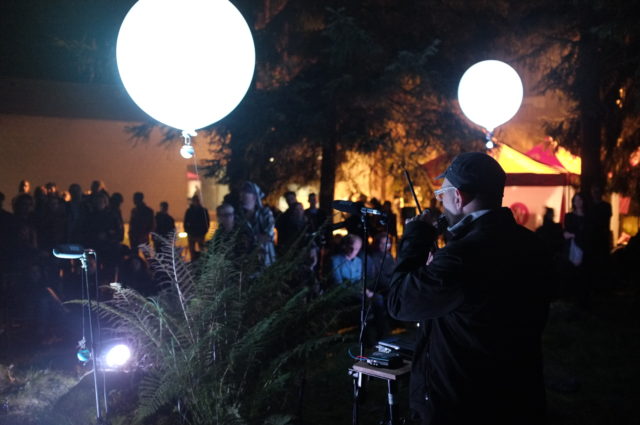Julia Eckhardt / Occam VI by Eliane Radigue – concert – Brehmer’s hall
OCCAM OCEAN
The idea for this piece was initially inspired by a large mural that I saw by chance in 1973, at the Museum of Natural History in Los Angeles. It showed the “spectrum of electromagnetic waves” moving from the largest to the smallest of known measurable wavelengths. Out of this large spectrum, there is a tiny zone from slightly less than 100 Hz to slightly more than 10 KHz that the ears of certain species populating the planet earth, have transformed into “sounds”. Later, I discovered interesting parallels with several of my reflections on William of Ockham and his famous treatise “Ockham’s Razor”. Expressed most succinctly in his own words, “The simplest, the best”, it has been adapted and used by numerous artist/creators. Last, came the distant recollection of a science fiction story I had read about the existence of a mythical ocean. Only the title remained etched in my memory, “Occam’s Razor”, which explains the origin of the spelling I chose. It seems in fact that the Ocean with its multiple waves allows us to symbolically be in contact with a rather large spectrum of vibrating undulations, stretching from great deep-sea swells to wavelets sparkling on a fine summer day. This explains the overall “structure” of the project. The work mode is based on an individual “image” illustrated and evoked within each solo. Each musician is guided by his or her personal “image”. This provides the essential, letting descriptive words and evocations establish a system of communication as the piece is being elaborated, and through this intuitive-instinctive process, we are guided to the very essence of music. There will be as many solos as there are volunteers willing to enter into this shared experience. They become the “sources”.
OCCAM IV
“Working on OCCAM IV and playing it, is like being guided through a landscape of water, sometimes actively searching, sometimes letting the attention linger on whatever it is attracted to. It is a path between activity and drifting with the play of water, wind, and light shaping abstract patterns the ear is drawn to, with concentration and ease.”
J. Eckhardt


















